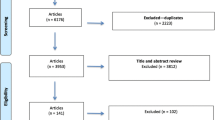Abstract
University tuition fees and student debt have risen in part due to rapid expansion of university administration compensation. This study provides a novel methodology for detecting inappropriate executive compensation within universities. The usefulness of academic ideas is openly ranked using the h-index. By comparing the ratio of academic executive pay to their h-index a dollar per value of academic impact can be found. If the university compensation system is appropriately calibrated, the impact/$ increases with faculty rank and continues to improve into the executive team. Analysis is provided for vice presidents of research of the ten largest state universities in America. The results suggest that 50% of these public universities are overcompensating their executives. A case study is presented of the most egregious discrepancy around compensation of >$3.1 million/year. The methodology was shown to be a quick and inexpensive way to ascertain if further investigation is necessary at an individual university.
Similar content being viewed by others
References
Acuna, D. E., Allesina, S., & Kording, K. P. (2012). Future impact: Predicting scientific success. Nature, 489, 201–202.
Anauati, M. V., Galiani, S., & Gálvez, R. H. (2014, November 11). Quantifying the life cycle of scholarly articles across fields of economic research. Retrieved from https://doi.org/ssrn.com/abstract=2523078
Ball, P. (2005). Index aims for fair ranking of scientists. Nature, 436, 900.
Bartneck, C., & Kokkelmans, S. (2011). Detecting h-index manipulation through self-citation analysis. Scientometrics, 87, 85–98.
Bebchuk, L. A. (2009). Pay without performance: The unfulfilled promise of executive compensation. Cambridge, MA: Harvard University Press.
Bebchuk, L. A., Cohen, A., & Spamann, H. (2010). Wages of failure: Executive compensation at Bear Stearns and Lehman 2000–2008. Yale Journal on Regulation, 27, 257–282.
Bebchuk, L. A., Fried, J. M., & Walker, D. I. (2002). Managerial power and rent extraction in the design of executive compensation. University of Chicago Law Review, 69, 751–846.
Bergmann, B. R. (1991). Bloated administration, blighted campuses. Academe, 77(6), 12–16.
Bogus, C. T. (1993). Excessive executive compensation and the failure of corporate democracy. Buffalo Law Review, 41(1), 79–83.
Bornmann, L., & Daniel, H. D. (2005). Does the h-index for ranking of scientists really work? Scientometrics, 65, 391–392.
Bornmann, L., & Daniel, H. D. (2007). What do we know about the h index? Journal of the American Society for Information Science and Technology, 58, 1381–1385.
Bornmann, L., & Daniel, H. D. (2009). The state of h index research. EMBO Reports, 10, 2–6.
Brick, I. E., Palmon, O., & Wald, J. K. (2006). CEO compensation, director compensation, and firm performance: Evidence of cronyism? Journal of Corporate Finance, 12, 403–423.
Brownlee, J. (2014). Irreconcilable differences: The corporatization of Canadian universities (doctoral dissertation). Ottowa, ON: Carleton University,.
Caywood, S. C. (2010). Wasting the corporate waste doctrine: How the doctrine can provide a viable solution in controlling excessive executive compensation. Michigan Law Review, 109 (1), 111–136.
Cheng, S. (2014). Executive compensation in public higher education: Does performance matter? Research in Higher Education, 55, 581–600.
Cherry, M. A., & Wong, J. (2009). Clawbacks: Prospective contract measures in an era of excessive executive compensation and ponzi schemes. Minnesota Law Review, 94, 368–427.
College Boards. (2015). Tuition and fees and room and board over time, 1974–75 to 2014–15, selected years. Retrieved from https://doi.org/trends.collegeboard.org/college-pricing/figures-tables/tuition-fees-room-board-time-1974-75-2014-15-selected-years
Cooke, S., & Donaldson, M. R. (2014). Self-citation by researchers: Narcissism or an inevitable outcome of a cohesive and sustained research program? Ideas in Ecology and Evolution, 7, 1–2.
Curtis, J. W., & Thornton, S. (2014). Losing focus: The annual report on the economic status of the profession, 2013–14. Academe, 100(4), 1–35.
Denhart, C. (2013). How the $1.2 trillion college debt crisis is crippling students, parents, and the economy. Forbes Magazine. Retrieved from https://doi.org/www.forbes.com/sites/specialfeatures/2013/08/07/how-the-college-debt-is-crippling-students-parents-and-the-economy/
Essaji, A., & Horton, S. (2010). Silent escalation: Salaries of senior university administrators in Ontario, 1996–2006. Higher Education, 59, 303–322.
Ferrara, E., & Romero, A. (2013). Scientific impact evaluation and the effect of self-citations: Mitigating the bias by discounting the h-index. Journal of the American Society for Information Science and Technology, 64, 2332–2339.
Galle, B. D., & Walker, D. I. (2015). The Problem of Nonprofit Executive Pay? Evidence from US Colleges and Universities. Working paper. Available: https://doi.org/lawdigitalcommons.bc.edu/cgi/ viewcontent.cgi?article=1974&context=lsfp
Ginsberg, B. (2011). The fall of the faculty. New York, NY: Oxford University Press.
Harris, D. G., & Livingstone, J. R. (2002). Federal tax legislation as an implicit contracting cost benchmark: The definition of excessive executive compensation. The Accounting Review, 77, 997–1018.
Hirsch, J. E. (2005). An index to quantify an individual’s scientific research output. Proceedings of the National Academy of Sciences, 102, 16569–16572.
Hirsch, J. E. (2007). Does the h index have predictive power? Proceedings of the National Academy of Sciences, 104, 19193–19198.
Humphreys, J., Ferrara, C., & Mason, B. (2011). Academic excess: Executive compensation at leading private colleges and universities in Massachusetts, Boston, MA: Center for Social Philanthropy, Tellus Institute.
Labbe, C. (2010). Les rapports de recherche du LIG. Rr.liglab.fr. Retrieved from https://doi.org/rr.liglab.fr/research_report/RR-LIG-008.pdf
Michigan State University. (2015). Executive officer biographies. Author. Retrieved from https://doi.org/msu.edu/about/thisismsu/executive/vp.html
National Center for Educational Statistics. (2006). Digest of educational statistics: 2006, Table 227. Washington, DC: National Center for Educational Statistics.
Peterson, I. (2005). Rating researchers. Science News. Retrieved from https://doi.org/www.sciencenews.org/article/rating-researchers
Sekercioglu, C. H. (2008). Quantifying coauthor contributions. Science, 322, 371.
Simon, L. A. K. (2015). Academic Publications. Michigan State University. Retrieved from https://doi.org/president.msu.edu/biography/academic-publications.html
Van Raan, A. F. (2005). Measurement of central aspects of scientific research: Performance, interdisciplinarity, structure. Measurement: Interdisciplinary Research and Perspectives, 3(1), 1–19.
Zhang, C. (2009). A proposal for calculating weighted citations based on author rank. EMBO Reports, 10, 416–417.
Author information
Authors and Affiliations
Corresponding author
Rights and permissions
About this article
Cite this article
Pearce, J. Are you overpaying your academic executive team? A method for detecting unmerited academic executive compensation. Tert Educ Manag 22, 189–201 (2016). https://doi.org/10.1080/13583883.2016.1181198
Received:
Accepted:
Published:
Issue Date:
DOI: https://doi.org/10.1080/13583883.2016.1181198



